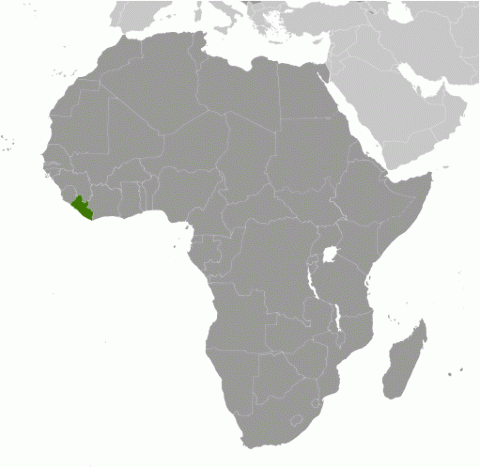Child Labor and Forced Labor Reports
Liberia


Moderate Advancement
In 2024, Liberia made moderate advancement in efforts to eliminate the worst forms of child labor. The government launched a National Action Plan on Business and Human Rights that aims to eliminate child labor and forced labor, as well as other exploitative and harmful labor conditions in supply chains. The National Commission on Child Labor also worked with local non-governmental organizations to conduct four training workshops on child labor issues for social workers and community leaders. In addition, the government launched an initiative to assist over 70,000 children living and working on the streets over a 5-year period. However, the government has yet to accede to the United Nations Committee on the Rights of the Child Optional Protocol on Armed Conflict or the Optional Protocol on the Sale of Children, Child Prostitution, and Child Pornography. The labor inspectorate is not able to assess penalties for child labor violations and labor and criminal law enforcement efforts are hindered by a lack of financial resources. In addition, the government’s social programs, including a lack of social programs addressing child labor in mining and agriculture, are also not sufficient to address the full scope of the problem in the country.
| Children | Age | Percent and Population |
|---|---|---|
| Working | 5 to 14 | 30.4% (Unavailable) |
| Hazardous Work by Children | 15 to 17 | Unavailable |
| Attending School | 5 to 14 | 80.1% |
| Combining Work and School | 7 to 14 | 28.6% |
| Sector/Industry | Activity |
|---|---|
| Agriculture | Production of rubber,† including cutting trees with machetes.† Farming activities. Also engaged in fishing, including traveling in canoes that go long distances from shore; using explosives to kill fish; diving with nets to collect fish; and helping pull heavy canoes onto the beach.† |
| Industry | Work in construction and mining, including diamonds, by digging pits, washing gravel, operating machines that pump water, using mercury, and carrying heavy loads.† Crushing stones. |
| Services | Domestic work.† Street work,† including begging and selling goods. Working as moto-taxi drivers and in retail. |
| Categorical Worst Forms of Child Labor‡ | Use in illicit activities, including selling drugs. Forced labor in domestic work, street vending, mining, begging, and working on small rubber plantations. Commercial sexual exploitation, sometimes as a result of human trafficking. |
† Determined by national law or regulation as hazardous and, as such, relevant to Article 3(d) of ILO C. 182.
‡ Child labor understood as the worst forms of child labor per se under Article 3(a)–(c) of ILO C. 182.
Children at Higher Risk
Children from rural areas are especially vulnerable to exploitation in forced begging, street vending, and domestic work in larger cities, such as the capital, Monrovia. Children who are part of the state’s welfare system, which is grossly underfunded and poorly administered, face increased vulnerability to child labor due to lack of supervision and resources. Girls and child sex workers in street work are particularly exposed to sexually transmitted diseases and HIV/AIDS, pregnancy, drug use, and physical violence. Other high-risk children include those living on or near mining concessions and commercial farms.
Barriers to Education Access
Section 9 of the Children’s Law mandates free basic education from grades one to nine; however, parents must pay official and unofficial expenses, such as fees for registration, uniforms, transportation, books, and school supplies, which are prohibitively expensive for many impoverished families. In addition, family members often require children to work long hours, denying them the ability to attend school, even if they could afford to do so. In rural communities, few teachers are on the official Ministry of Education payroll, and communities supplement their school’s teaching force by recruiting and paying small stipends for volunteer teachers. Due to a practice commonly known as “sex for grades,” school staff may make sexual advances toward students, causing some children to avoid or drop out of school entirely. Research also indicates that the practice of temporarily removing boys and girls from formal schooling to participate in initiation rituals transitioning children into adulthood is ongoing; many of these children may not return to school afterward, making them more vulnerable to child labor. Children with disabilities face difficulty in gaining access to learning facilities due to physical structures that are not accessible, as well as the lack of programs and resources to accommodate children with non-physical disabilities.
| Standard | Age | Meets International Standards | Legislation |
|---|---|---|---|
| Minimum Age for Work | 15 | ✓ | Articles 2.3 and 21.2 of the Decent Work Act |
| Minimum Age for Hazardous Work | 18 | ✓ | Article 7 and Section 9.1 of the Children’s Law |
| Identification of Hazardous Occupations or Activities Prohibited for Children | ✓ | Article 21.4 of the Decent Work Act; Hazardous and Light Work List of 2023 | |
| Prohibition of Slavery, Debt Bondage, and Forced Labor | ✓ | Article 2.2 of the Decent Work Act; Article 7, Section 8 of the Children’s Law; Article 12 of the Constitution; Article 1 of the Act to Ban Trafficking in Persons Within the Republic of Liberia | |
| Prohibition of Child Trafficking | ✓ | Article 7, Section 8 of the Children’s Law; Article 1 of the Act to Ban Trafficking in Persons Within the Republic of Liberia | |
| Prohibition of Commercial Sexual Exploitation of Children | ✓ | Article 2.3 of the Decent Work Act; Article 3, Section 21 of the Children’s Law; Article 1 of the Act to Ban Trafficking in Persons Within the Republic of Liberia | |
| Prohibition of Using Children in Illicit Activities | ✓ | Article 2.3 of the Decent Work Act; Chapter 16 of the Penal Code | |
| Minimum Age for Voluntary State Military Recruitment | 18 | ✓ | Article 3, Section 22 of the Children’s Law |
| Prohibition of Compulsory Recruitment of Children by (State) Military | ✓* | Article 2.3 of the Decent Work Act; Article 3, Section 22 of the Children’s Law | |
| Prohibition of Military Recruitment by Non-state Armed Groups | ✓ | Article 3, Section 22 of the Children’s Law | |
| Compulsory Education Age | 15 | ✓ | Article 3, Section 9 of the Children’s Law; Chapter 4 of the Education Reform Act |
| Free Public Education | ✓ | Article 3, Section 9 of the Children’s Law; Chapter 4 of the Education Reform Act |
* Country has no conscription, but has law specifically prohibiting conscription of children
| Organization/Agency | Role & Activities |
|---|
| Ministry of Labor: Through the labor inspectorate, conducts worksite inspections to identify child labor cases, and through the Child Labor Division, takes actions to identify and support children in hazardous working conditions, and those working on the streets. Chairs the National Commission on Child Labor (NACOMAL). In 2024, reports indicate that limited funding, weak coordination, and a lack of expertise were barriers to effective enforcement of existing child labor laws. Ministry of Labor officials reported that the Ministry allocated $40,000 to human trafficking programming and no funding to its Child Labor Division. In addition, labor inspectors lacked transportation to carry out inspections, especially in rural areas, and also lacked information technology equipment, such as laptops, for use in field visits. |
| Ministry of Justice: Promotes and enforces laws for public safety, including investigation and prosecution of violations related to the worst forms of child labor. Through the Women and Children Protection Section (WACPS), investigates cases of forced child labor, child trafficking, and commercial sexual exploitation of children, and works closely with child welfare agencies to assist victims and refer them to social protection services. WACPS was under-resourced, especially outside the capital, Monrovia. Through the Anti-Trafficking Special Unit of the Liberia National Police, assists on cases related to human trafficking, and through the Anti-Human Trafficking and Migrant Smuggling Unit of the Liberia Immigration Service, also investigates cases of human trafficking in collaboration with the Liberia National Police. In 2024, the International Development Law Organization conducted several trainings for labor inspectors and criminal law enforcement officials, and more than 200 new Liberia National Police officers received training on child labor and trafficking as part of the officer basic course. |
| Overview of Enforcement Efforts | 2024 |
|---|---|
| Has a Labor Inspectorate | Yes |
| Able to Assess Civil Penalties | No |
| Routinely Conducted Worksite Inspections | Unknown |
| Unannounced Inspections Permitted | Yes |
| Has a Complaint Mechanism | No |
| Imposed Penalties for Child Labor Violations | Unknown |
| Conducted Criminal Investigations for Worst Forms of Child Labor Crimes | Unknown |
| Imposed Penalties for Worst Forms of Child Labor Crimes | Unknown |
In 2024, 109 labor inspectors conducted an unknown number of worksite inspections, finding an unknown number of child labor violations. It is also unknown whether investigations into suspected cases of the worst forms of child labor were conducted, prosecutions were initiated, or perpetrators were convicted.
| Coordinating Body | Role & Activities |
|---|
| National Commission on Child Labor (NACOMAL): Coordinates government and civil society activities concerning child labor. Led by the Ministry of Labor and comprises representatives from 16 organizations, including international and civil society organizations. Assists in coordinating child labor investigations. Seeks to reform national child labor laws and create a national child labor database, which would assist surveys on the extent of child labor issues in Liberia. During the reporting period, NACOMAL held coordination meetings through the National Steering Committee that resulted in the review and validation of Liberia’s draft Child Labor Bill. NACOMAL had previously reported insufficient funding to pursue its mandates and that continuing coordination issues remained, specifically with the Anti-Human Trafficking Task Force. |
| Policy | Description & Activities |
|---|
| National Action Plan on the Elimination of Child Labor: Aims to reduce child labor and the worst forms of child labor by 50 percent by 2030 through 3 strategic objectives, including increasing public awareness on the causes and consequences of the worst forms of child labor, strengthening the legal and institutional frameworks to reduce child labor, and increasing social services and protection for children of vulnerable households. Research was unable to determine whether activities were carried out under this policy during the reporting period. |
| National Action Plan for Trafficking in Persons (2019–2024): Outlined the government’s anti-trafficking efforts, including those for child victims, and created benchmark goals related to human trafficking. Established roles and responsibilities for coordinating government assistance to human trafficking victims, and provided shelter and care to children who may have been victims of human trafficking. The Liberia National Police’s Women and Children Protection Section conducted 16 days of awareness raising in November 2024 on issues pertaining to women and child protection, including child labor and human trafficking. |
| National Action Plan on Business and Human Rights:* Launched in 2024, aims to foster a thriving business environment while safeguarding the fundamental rights of all individuals. The plan includes, but is not limited to, identification of human rights concerns, including child labor; creation of a National Working Group on Business and Human Rights; and tasking of the government at all levels to develop policies that advance business and human rights education. |
* Policy was approved during the reporting period.
| Program | Description & Activities |
|---|
| Street Child Project (2024-2030):‡ Following a 2022 survey that revealed 366,584 street-connected children across Liberia, the Ministry of Gender, Children, and Social Protection launched this project in 2024 to remove more than 50,000 children from street situations and provide them with childcare, education, and family-strengthening programming. For the pilot phase, the Government of Liberia committed $379,000 as startup funding. |
| Shelters:‡ The Ministry of Gender, Children, and Social Protection operates two shelters in Margibi and Montserrado counties. It also supports “one-stop centers,” which provide medical care, psychosocial support, and legal services for victims of sexual violence and other forms of abuse, including in Lofa, Montserrado, and Nimba. |
| Social Safety Net Program:‡ Aims to establish the key building blocks of a basic national safety net delivery system and provide income support to households. In 2024, the program was implemented by the Ministry of Gender, Children, and Social Protection and reached more than 25,000 households (about 105,000 individuals) in four counties (Bomi, Grand Kru, Maryland, and River Gee) with the Social Cash Transfer program and enrolled over 250,000 households in the Liberia Household Social Registry in 5 counties (Bomi, Bong, Grand Kru, Maryland, and Nimba). |
‡ Program is funded by the Government of Liberia.
† The government had other social programs that may have included the goal of eliminating or preventing child labor.
| Area | Suggested Action |
|---|---|
| Legal Framework | Accede to the UN Convention on the Rights of the Child Optional Protocol on the Sale of Children, Child Prostitution and Child Pornography. |
| Accede to the UN Convention on the Rights of the Child Optional Protocol on Armed Conflict. | |
| Enforcement | Ensure that penalties for employing children under the minimum age for work are stringent enough to deter violations. Authorize the labor inspectorate to assess penalties for child labor violations. |
| Ensure that the labor inspectorate’s complaint and referral mechanisms are adequately supported and operational. | |
| Update the hazardous work list with activities that children are known to engage in, including the use of explosives in fishing. | |
| Ensure adequate funding for labor law enforcement agencies, such as the Ministry of Labor and the Women and Children Protection Section, and provide necessary training for the relevant authorities to enforce child labor laws. | |
| Publicly release labor law enforcement data, including the number of labor inspectors, labor inspections, child labor violations found, whether penalties were applied, and number of penalties that were collected on an annual basis. | |
| Ensure adequate funding for criminal law enforcement agencies, such as the Liberia National Police, and provide necessary training for such officials to enforce child labor laws. | |
| Disaggregate child endangerment cases prosecuted through the Ministry of Justice to determine the number of cases related to the worst forms of child labor. | |
| Publicly release criminal enforcement data, including the number of investigations, prosecutions, and convictions during the reporting period. | |
| Establish a digital tracking system for civil worst forms of child labor. | |
| Coordination | Ensure adequate funding for the National Commission on Child Labor’s program activities to address child labor, and carry out and publish information about coordinating activities. |
| Ensure that coordinating bodies, including the Anti-Human Trafficking Task Force, are implementing effective case referral mechanisms. | |
| Government Policies | Implement the National Action Plan on the Elimination of Child Labor, the National Action Plan for Trafficking in Persons, and the Social Welfare Policy, and publish results from activities implemented during the reporting period. |
| Social Programs | Collect and publish comprehensive research data to determine child labor activities and to inform policies and programs. |
| Improve access to education by subsidizing school-related costs; reduce barriers to education by building additional schools, providing facilities and resources for differing abilities, hiring more rural teachers, providing sufficient learning materials, addressing sexual abuse in both schools and orphanages, and providing adequate transportation; and ensure that children do not leave school before the completion of compulsory education. | |
| Expand social programs to address the full scope of the child labor problem, especially in forced domestic work, the production of rubber and palm oil, commercial sexual exploitation, begging, street selling, and mining, and to protect street children vulnerable to child labor and human trafficking. | |
| Carry out activities under programs such as the Anti-Trafficking Awareness Campaign and government-run shelters, ensure that other social safety net programs address child labor, and publish information about the implementation of these programs on an annual basis. |



